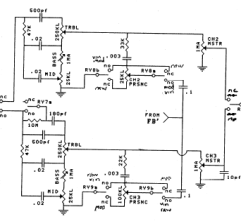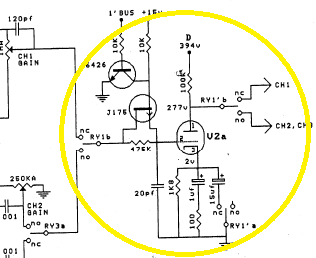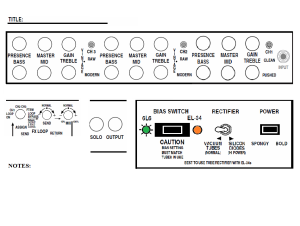Wow. After most of one year devoted to my favorite amplifier, I don’t have a regular topic to cover, now. Toward the end of 2015, my health declined pretty dramatically. I ended the Dual Rectifier analysis early, because it was taking too long to put the articles together. Aside from helping people understand the amp or tweak it, my intention was to assist DIY circuit designers, by highlighting interactions between the preamp stages and the key changes Mesa made to the basic design as established by Marshall and Soldano.
Since this version is now obsolete, I felt there would be little harm in sharing an analysis. I haven’t done this for people to copy the design in whole. Since the schematic is available in dozens of places, that could already be done by anyone who would want to. I want people who are making their own amplifiers to see what this example does and decide if anything from it should, or should not, be a part of their own design, or if a modified form could be used.
When my health became even worse than it already was, I was stopped dead in my tracks. By the time I could sit at the computer again, the inspiration was waning; not by lack of my want to write it out, but by the effects of the disorders I have to contend with. It’s a very difficult hobby and I don’t want to make mistakes if I’m trying to help others.
Left Undone
I had not originally planned to write about the power amp, but some of it was relevant to analyzing the preamp modes. I put that into the “Overview” article, but there is more that could be said. I’m not sure I’m going to be able to do it. In particular, the negative feedback could use a more detailed analysis to determine exactly how much stability is being added.
The other thing is the power supply. The effects from combinations of different settings of the power and rectifiers would help with understanding the compression and headroom designed into the stages. In fact, with only a very quick look, I noticed that V1 and V2 are probably more compressed and act like a limiter compared to tubes upstream, but it would need an analysis to be sure of that and also the extent of it.
So….
I’ve had a request to analyze the Mesa Boogie Mark V. I might analyze select parts of it. At this time, I don’t have the energy to go into massive detail and I don’t own a Mark to test the results. I could post it as “just hypothesis”.
If I run into my own problems or cool, quirky tones, I’ll post about solutions or tweaks. I also have one my old pedal designs to tinker with and some DIY ideas to look through, but I am not able to be in a hurry with any of it.


